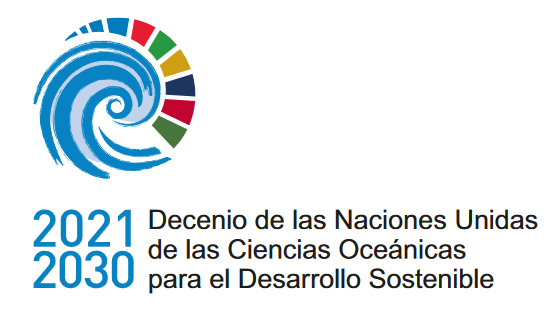Caracterización nutricional de Trachurus lathami descartada por la industria pesquera argentina: primer paso hacia la valorización sustentable de la especie
DOI:
https://doi.org/10.47193/mafis.3742024010701Palabras clave:
Valorización del descarte de peces, calidad nutricional, ácidos grasos, DHA, EPAResumen
En las pesquerías pelágicas de la Plataforma Continental Argentina, el jurel (Trachurus lathami) es capturado incidentalmente, siendo descartado por la flota comercial a pesar de sus altas abundancias. Con el objetivo de promover el uso sostenible de esta especie, se reporta aquí por primera vez la caracterización nutricional de T. lathami. El alto contenido de proteínas (16%) y lípidos (5.4%) en individuos enteros indicó que esta es una especie moderadamente grasa. En la porción comestible, dentro de los lípidos totales (4.8%), la fracción poliinsaturada n-3 estuvo representada por los ácidos docosahexaenoico (16.8%) y eicosapentaenoico (5.6%). Los resultados alientan estrategias potenciales hacia el desarrollo de productos reestructurados para consumo humano.
Descargas
Métricas
Citas
Andrianov DP. 1985. Study on the reproduction of Peruvian scad, Trachurus murphyi (Carangidae), of the Peruvian shelf. J Ichthyol. 25: 32-40.
[AOAC] Association of Official Agricultural Chemists. 1995. Washington, DC: Association of Official Analytical Chemist.
Aranda M, Mendoza N, Villegas R. 2006. Lipid damage during frozen storage of whole Jack mackerel (Trachurus symmetricus murphyi). J Food Lipids. 13: 155-166.
Aubourg S, Lehmann I, Gallardo J. 2002. Effect of previous chilled storage on rancidity development in frozen horse mackerel (Trachurus trachurus). J Sci Food Agric. 82: 1764-1771.
Aubourg S, Ugliano M. 2002. Effect of brine pre-treatment on lipid stability of frozen horse mackerel (Trachurus trachurus). Eur Food Res Technol. 215: 91-95.
Bandarra N, Batista I, Nunes ML, Empi JM. 2001. Seasonal variation in the chemical composition of horse mackerel (Trachurus trachurus). Eur Food Res Technol. 212: 535-539.
Blanco M, Domínguez-Timó F, Pérez-Martín RI, Fraguas J, Ramos-Ariza P, Vázquez JA Borderías AJ, Moreno HM. 2018. Valorization of recurrently discarded fish species in trawler fisheries in North-West Spain. J Food Sci Technol. 55 (11): 4477-4484.
Bligh E, Dyer W. 1959. A rapid method of total extraction and purification. Can J Biochem. 37: 911-917.
Bórquez R, Espinoza M, Ormeño R. 1994. Effects of storage time and chemical preservatives on the Total Volatile Basic Nitrogen content in Chilean mackerel (Trachurus murphy) prior to fish meal production. J Sci Food Agric. 66: 181-186.
Castro P, Padrón JCP, Cansino MJC, Velázquez ES, De Larriva RM. 2006. Total volatile base nitrogen and its use to assess freshness in European sea bass stored in ice. Food Control. 17 (4): 245-248.
Celik M. 2008. Seasonal changes in the proximate chemical compositions and fatty acids of chub mackerel (Scomber japonicus) and horse mackerel (Trachurus trachurus) from the northeastern Mediterranean Sea. Int J Food Sci Technol. 43: 933-938.
Chen J, Muthukumaran J, Weibin B, Baojun X. 2022. A critical review on the health benefits of fish consumption and its bioactive constituents. Food Chem. 369: 130874. DOI: https://doi.org/10.1016/j.foodchem.2021.130874
Chow KC. 2000. Fatty acids in foods and their health implications. 2nd ed. New York: Marcel Dekker.
Cousseau MB, Perrotta RG. 2013. Peces marinos de Argentina: biología, distribución, pesca. Mar del Plata: Instituto Nacional de Investigación y Desarrollo Pesquero (INIDEP). 193 p.
[EU] European Union. 1995. Commission Decision of 8 March 1995 fixing the total volatile basic nitrogen (TVB-N) limit values for certain categories of fishery products and specifying the analysis methods to be used. OJ L 97 29.04.1995. p. 84-87.
[FAO] Food and Agriculture Organization of the United Nations. 2012. Sustainable diets and biodiversity. Rome: FAO.
Flaminio JL, Pérez MR, Cadaveira G, Blanco G. 2017. Descartes registrados por observadores en buques de la flota de altura de arrastre comercial argentina dirigida a peces demersales y crustáceos durante el año 2016. Estimación del descarte total por flota. Inf Ases Transf INIDEP Nº 174/2017. 137 p.
Garciarena D. 2022. Acerca de la anchoíta (Engraulis anchoita) y la caballa (Scomber colias), su descarte y by-catch. Inf Ases Transf INIDEP Nº 22/2022. 21 p.
InfoStat. 2008. InfoStat professional, versión 1.1. Manual del usuario. 1st ed. Universidad Nacional de Córdoba. Córdoba: Editorial Brujas. [accessed 2023 Nov]. https://repositorio.catie.ac.cr/bitstream/handle/11554/10346/Manual_INFOSTAT_2008.pdf.
[ISO] International Organization for Standardization. 2017. Animal and vegetable fats and oils - gas chromatography of fatty acid methyl esters. Part 2: preparation of methyl esters of fatty acids (ISO 12966-2). [accessed 2023 Nov]. https://www.iso.org/standard/72142.html.
Kim SM, Kim H, Lee WC, Kim HC, Lee H, Lee DS, Kwak SN, Joc N, Lee SH. 2016. Monthly variation in the proximate composition of jack mackerel (Trachurus japonicus) from Geumo Island, Korea. Fish Res. 183: 371-378.
Losada V, Piñeiro C, Barros-Velázquez J, Aubourg SP. 2005. Inhibition of chemical changes related to freshness loss during storage of horse mackerel (Trachurus trachurus) in slurry ice. Food Chem. 93: 619-625.
Moreno H, Herranz B, Pérez-Mateos M, Sánchez-Alonso I, Borderías AJ. 2014. New Alternatives in Seafood Restructured Products. Crit Rev Food Sci. 56 (2): 237-248.
Moreno HM, Carballo J, Borderías AJ. 2009. Study of two different cold restructuring processes using two different qualities of hake (Merluccius capensis) muscle, with addition of microbial transglutaminase. J Sci Food Agric. 89: 1346-1351. DOI: https://doi.org/10.1002/jsfa.3592
Orban E, Di Lena G, Nevigato T, Masci M, Casini I, Caproni R. 2011. Proximate, unsaponifiable lipid and fatty acid composition of bogue (Boops boops) and horse mackerel (Trachurus trachurus) from the Italian trawl fishery. J Food Compos Anal. 24: 1110-1116.
Orlando P, Mendiolar M, Buratti CC. 2018. Relación entre la distribución espacial del surel (Trachurus lathami) y variables ambientales en el ecosistema costero (34°-41°S) en primavera. Frente Marít. 25: 349-368.
Osako K, Yamaguchi A, Kurokawa T, Kuwahara K, Saito H, Nozaki Y. 2002. Chemical components and body color of horse mackerel caught in different areas. Fish Res. 68: 587-594.
Özden Ö. 2010. Micro, macro mineral and proximate composition of Atlantic bonito and horse mackerel: a monthly differentiation. Int J Food Sci Technol. 45: 578-586.
Passi S, Cataudella S, Di Marco P, De Simone F, Rastrelli L. 2002. Fatty acid composition and antioxidant levels in muscle tissue of different mediterranean marine species of fish and shellfish. J Agr Food Chem. 50: 7314-7322
Riestra C, Ruarte C. 2017. Antecedentes del análisis de la captura incidental (bycatch) y descarte en la pesquería del variado costero. Inf Ases Transf INIDEP Nº 57/2017. 25 p.
Ruas LC, Vaz-Dos-Santos AM. 2017. Age structure and growth of the rough scad, Trachurus lathami (Teleostei: Carangidae), in the southeastern Brazilian Bight. Zoología. 34: e20475.
Santos S, Oliveira A, Lopes C. 2013. Systematic review of saturated fatty acids on inflammation and circulating levels of adipokines. Nutr Res. 33 (9): 687-695.
Subsecretaría de Pesca y Acuicultura Argentina. 2023. [accessed 2023 Nov]. https://www.argentina.gob.ar/agricultura/agricultura-ganaderia-y-pesca/subsecretaria-de-pesca-y-acuicultura.
Sugasini D, Park JC, McAnany JJ. 2023. Improvement of retinal function in Alzheimer disease-associated retinopathy by dietary lysophosphatidylcholine-EPA/DHA. Sci Rep. 13: 9179. DOI: https://doi.org/10.1038/s41598-023-36268-0
Tawfik MS. 2009. Proximate composition and fatty acids profiles in most common available fish species in Saudi Martket. Asia Pac J Clin Nutr. 1: 50-57.
Tironi VA, Tomás MC, Añón MC. 2007. Lipid and protein deterioration during the chilled storage of sea salmon (Pseudopercis semifasciata). J Sci Food Agric. 87: 2239-2246.
Wall R, Ross RP, Fitzgerald GF, Stanton C. 2010. Fatty acids from fish: the anti-inflammatory potential of long-chain omega-3 fatty acids. Nutr Rev. 68 (5): 280-289.
Wu T, Wang M, Wang P, Tian H, Zhan P. 2022. Advances in the formation and control methods of undesirable flavors in fish. Foods. 11 (16): 2504. DOI: https://doi.org/10.3390/foods11162504
Zhang X, Ning X, He X, Sun X, Yu X, Cheng Y. 2020. Fatty acid composition analyses of commercially important fish species from the Pearl River Estuary, China. PLoS ONE. 15 (1): e0228276.

Descargas
Publicado
Cómo citar
Número
Sección
Licencia
Derechos de autor 2024 Francesca M. Mitton, Marina Vittone, Brenda Temperoni, Agueda E. Massa

Esta obra está bajo una licencia internacional Creative Commons Atribución-NoComercial-CompartirIgual 4.0.
Los autores de los artículos publicados en Marine and Fishery Sciences conservan los derechos de autor de sus artículos, a excepción de las imágenes de terceros y otros materiales añadidos por Marine and Fishery Sciences, que están sujetos a los derechos de autor de sus respectivos propietarios. Por lo tanto, los autores son libres de difundir y volver a publicar sus artículos, sujeto a los requisitos de los propietarios de derechos de autor de terceros y sujeto a que la publicación original sea completamente citada. Los visitantes también pueden descargar y reenviar artículos sujetos a los requisitos de citas. La capacidad de copiar, descargar, reenviar o distribuir cualquier material siempre está sujeta a los avisos de derechos de autor que se muestran. Los avisos de copyright deben mostrarse de manera prominente y no pueden borrarse, eliminarse u ocultarse, total o parcialmente. El autoalmacenamiento en servidores y repositorios de preimpresión está permitido para todas las versiones.
Esta revista ofrece a los autores una política de acceso abierto. Los usuarios pueden leer, descargar, copiar, distribuir, imprimir, buscar o vincular los textos completos de los artículos, o usarlos para cualquier otro propósito legal dentro de la licencia Creative Commons 4.0 (BY-NC-SA), sin solicitar permiso previo del editor o del autor. Esto está de acuerdo con la definición BOAI de acceso abierto.



























